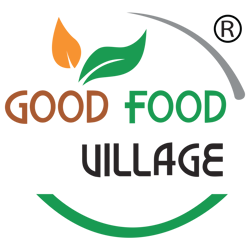How the Food Forest Model Can Create Wealth, Sustainability, and Prosperity
In a world where industrial farming has led to soil depletion, rising costs, and climate change, the Food Forest Model offers a revolutionary solution that brings long-term financial success, environmental restoration, and community wellness. At Good Food Village (GFV), we have adopted this regenerative farming model that mimics natural ecosystems, ensuring high yields, soil health, and carbon sequestration while generating a steady, sustainable income for farmers.
🌳 What is a Food Forest?
A Food Forest is a multi-layered agricultural system where edible plants, trees, and herbs grow together in a self-sustaining ecosystem. It’s designed to function like a natural forest but is structured to maximize productivity, profitability, and sustainability. This method not only enhances biodiversity and soil fertility but also creates a continuous and growing revenue stream for farmers.
💰 How the Food Forest Model Leads to Wealth Creation
✔ Initial Investment: Approximately ₹10 lakhs per acre depending on the landscape ✔ Annual Revenue: Over ₹8 lakhs per acre per year after two years ✔ Long-Term Growth: Revenue increases as the ecosystem matures ✔ Fair Trade & Premium Pricing: Higher profits from organic and sustainable produce ✔ Surpasses Traditional Farming: Outperforms conventional monoculture crops in income potential
Unlike conventional farming, which relies heavily on chemicals and fluctuating market prices, food forests provide financial stability through diverse revenue streams, such as:
- Organic fruit and nut production
- Medicinal herbs and wellness products
- Sustainable timber and fiber crops
- Agro-tourism and wellness experiences
- Value-added food processing
🌿 The Seven-Layer Wealth-Building Food Forest Model
The food forest is designed in seven productive layers, ensuring year-round harvesting and multiple income sources:
1️⃣ Canopy Layer
Tall trees like mango, jackfruit, coconut, and nut trees provide high-value crops and shade.
2️⃣ Understory Layer
Smaller fruit trees such as guava, papaya, and citrus maximize space efficiency.
3️⃣ Shrub Layer
Berry bushes and medicinal shrubs create an additional revenue stream with superfoods.
4️⃣ Herbaceous Layer
Herbs and perennial vegetables like turmeric, ginger, and moringa are highly profitable and in demand.
5️⃣ Ground Cover Layer
Low-growing plants protect the soil, prevent weeds, and retain moisture, reducing irrigation costs.
6️⃣ Rhizosphere Layer
Root vegetables such as yams, sweet potatoes, and radishes enrich the soil and provide additional yields.
7️⃣ Vertical Layer
Vining plants like pepper, passionfruit, and beans maximize land use, ensuring higher profitability per acre.
🌍 Environmental & Social Benefits of Food Forests
The Food Forest Model goes beyond financial rewards—it’s a solution to climate change and community empowerment.
✔ Carbon Sequestration: Trees and plants absorb carbon, helping combat global warming.
✔ Soil Regeneration: No chemicals, no depletion—just richer, healthier soil every year.
✔ Water Conservation: Reduces water usage compared to traditional farming.
✔ Fair Trade & Ethical Agriculture: Farmers earn more while practicing sustainable agriculture.
✔ Agro-Tourism & Community Impact: Creates eco-tourism and wellness experiences, boosting local economies.
🚀 The Future of Wealthy & Sustainable Farming is Here!
The Food Forest Model is the key to long-term prosperity—it generates wealth, regenerates land, and creates a healthier future for farmers, consumers, and the planet.
Are you ready to invest in a future of abundance, sustainability, and financial freedom? Whether you are a farmer, investor, or sustainability enthusiast, Good Food Village is here to help you build a profitable and self-sustaining food forest.
📞 Get Started Today! Contact us to learn how you can establish your own Food Forest.
🌿 Good Food Village – Creating Wealth, Wellness & Sustainability.

